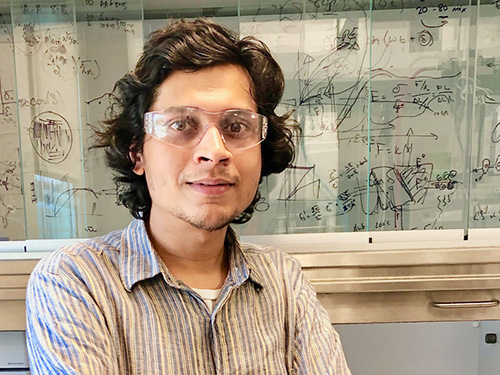Featured Customer: Maruti Hegde, Ph.D.

Polymeric materials with improved thermal and mechanical properties drive technology in industries such as aerospace and automobiles. Featured customer Dr. Maruti Hegde is on a mission: to create and understand novel polymers that can overcome technological barriers for 21st century engineering.
Please tell us about your background: where you grew up, studied and the field you chose.
I grew up in Mumbai, India and went to University of Hull, U.K., to pursue a Masters degree. I got my Ph.D. from Delft University of Technology, Netherlands, under the guidance of Dr. Theo J. Dingemans. I did a post-doc with Dr. Kitty Neijmeijer, University of Twente and then moved to Virginia Tech for a post-doc in the group of Dr. Timothy E. Long. My research has primarily focused on synthesis of all-aromatic high-performance polymers and their characterization, attempting to unite the three strands of polymer research: molecular design and synthesis, processing, and function.
What led you to choose those fields? What are the challenges that excite you?
In polymer research we assemble molecular building blocks to create novel materials that solve real-world problems. All-aromatic, high-performance polymers are of great interest to NASA, since these materials hold promise for the high temperature stability and excellent mechanical properties necessary for structural applications in the aerospace and automotive industries. However, the all-aromatic backbone makes synthesis, characterization, and processing extremely challenging. Coming up with a winning formula is inherently difficult, but when we find it, the outcome is gratifying.
As synthetic chemists, we are required to constantly engage with the engineers who do much of the processing and manufacturing work and with polymer physicists to understand the polymer fundamentals. Interdisciplinary collaborations bring their own challenges—engineers and synthetic chemists do not speak the same language—but such an approach has been fruitful and rewarding.
Our experiments have led to the discovery of the first amorphous polymer capable of crystallizing around the single-wall carbon nanotube surface. This interface governs the behavior of the resulting nanocomposite, and we have learnt how to tune the interface through synthesis and processing. In fact, we have been able to demonstrate that such materials can function as thermoelectrics and also serve as structural components in lightweight planes and cars.
Furthermore, additive manufacturing (or 3D printing) as a processing technique should enable us to impart functionality through shape control while making processing ‘easy’. My post-doctoral work with Dr. Long and Dr. Williams at Virginia Tech. established that we can in fact 3D print heretofore ‘unprocessable’ polymers such as Kapton™.
What does your current position entail? How does it tie in to your previous experience, and where is it going?
I am a Research Scientist in the Dept. of Applied Physical Sciences at University of North Carolina, Chapel Hill, with Dr. Theo Dingemans as P.I. My current research is focused on understanding fundamentals of rigid-rod polyelectrolytes and their liquid crystalline behavior. We hope to use the charged backbone and the inherent ordering of liquid crystalline polymers to make ultra-strong composites and high-temperature functional materials.
How has your Wyatt instrumentation contributed to your research and development studies?
The absolute molecular weights obtained using a MALS detector such as a Wyatt DAWN® are more meaningful to us than the relative molecular weights obtained by comparing rigid, all-aromatic polymers with random coil polystyrene standards. What’s more, dissolution of highly aromatic polymers for characterization often necessitates use of aggressive solvents such as sulfuric acid or o-chloronapthalene and temperatures up to 200 °C. Fortunately, the DAWN UHT (ultra-high temperature model) with COMET™ is fully compatible with these conditions and even offers the unparalleled possibility to perform batch mode measurements (such as Zimm plots) at 210 °C! This versatility gives us the characterization we need to connect synthesis, processing and structure.

For our lab, measurement of accurate molecular weights of high-performance aromatic polymers using the DAWN is critical for understanding structure-property-processing relationships.
